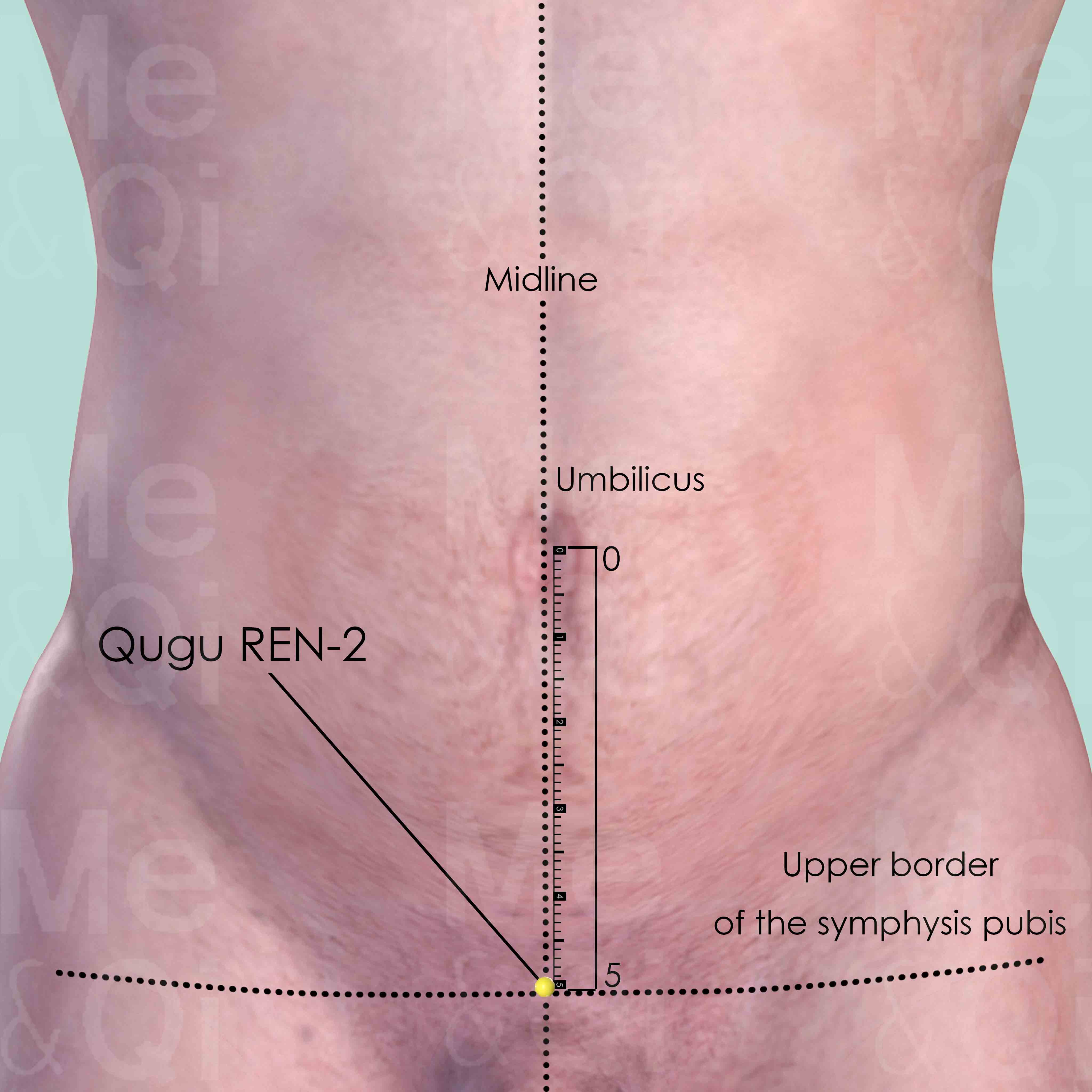Genital Painaccording to TCM
Symptom family: Genital Pain and Discomfort
Did you mean? Penile Pain
What is Genital Pain?
Genital pain refers to discomfort or pain in the genital area, encompassing both the external and internal reproductive organs. This symptom can manifest in various forms, such as aching, sharp, or burning sensations, and may be constant or intermittent.
Causes of genital pain are diverse, ranging from infections and inflammations to injuries and chronic conditions. Due to the complexity and sensitivity of the genital region, this type of pain can significantly impact an individual's daily life, prompting a need for accurate diagnosis and effective treatment.
How Does TCM View Genital Pain?
Traditional Chinese Medicine (TCM) approaches genital pain differently from Western medicine. TCM views this symptom as an indication of imbalances or disharmonies within the body's Qi (vital energy), Blood, and organ systems.
Unlike Western medicine, which often focuses on localized causes, TCM considers the interplay of external factors and internal disharmonies in the body. This holistic approach emphasizes identifying the specific pattern of disharmony underlying the genital pain to provide effective, personalized treatment.
Causes of Genital Pain According to TCM
In TCM, genital pain is often associated with specific patterns of disharmony. Blood Stasis, for instance, can lead to genital pain due to the stagnation and blockage of Blood and Qi in the reproductive area. This can manifest as sharp, stabbing pain that's usually fixed in location.
Another common pattern is Damp-Heat, which can cause swelling, itching, and a burning sensation in the genital area. These patterns illustrate the complexity of diagnosing and treating genital pain in TCM, focusing on the systemic causes rather than just the symptoms.
Acupoints for Genital Pain
Acupuncture is another crucial aspect of TCM treatment for genital pain. Acupoints like Dadun LIV-1 on the Liver Channel and Qichong ST-30 on the Stomach Channel are targeted for their effectiveness in regulating Qi in the Lower Burner and invigorating Blood and Qi in the Lower Burner, respectively.
Sanyinjiao SP-6 on the Spleen Channel is also significant for its role in tonifying the Spleen and Stomach and resolving Dampness. These points are part of a comprehensive TCM strategy that focuses on addressing the root causes of genital pain and restoring overall balance.
Explore below some acupoints used to address genital pain, organized by meridian.
- By Meridian
- Liver Channel
- Bladder Channel
- Directing Vessel
- Kidney Channel
- Lung Channel
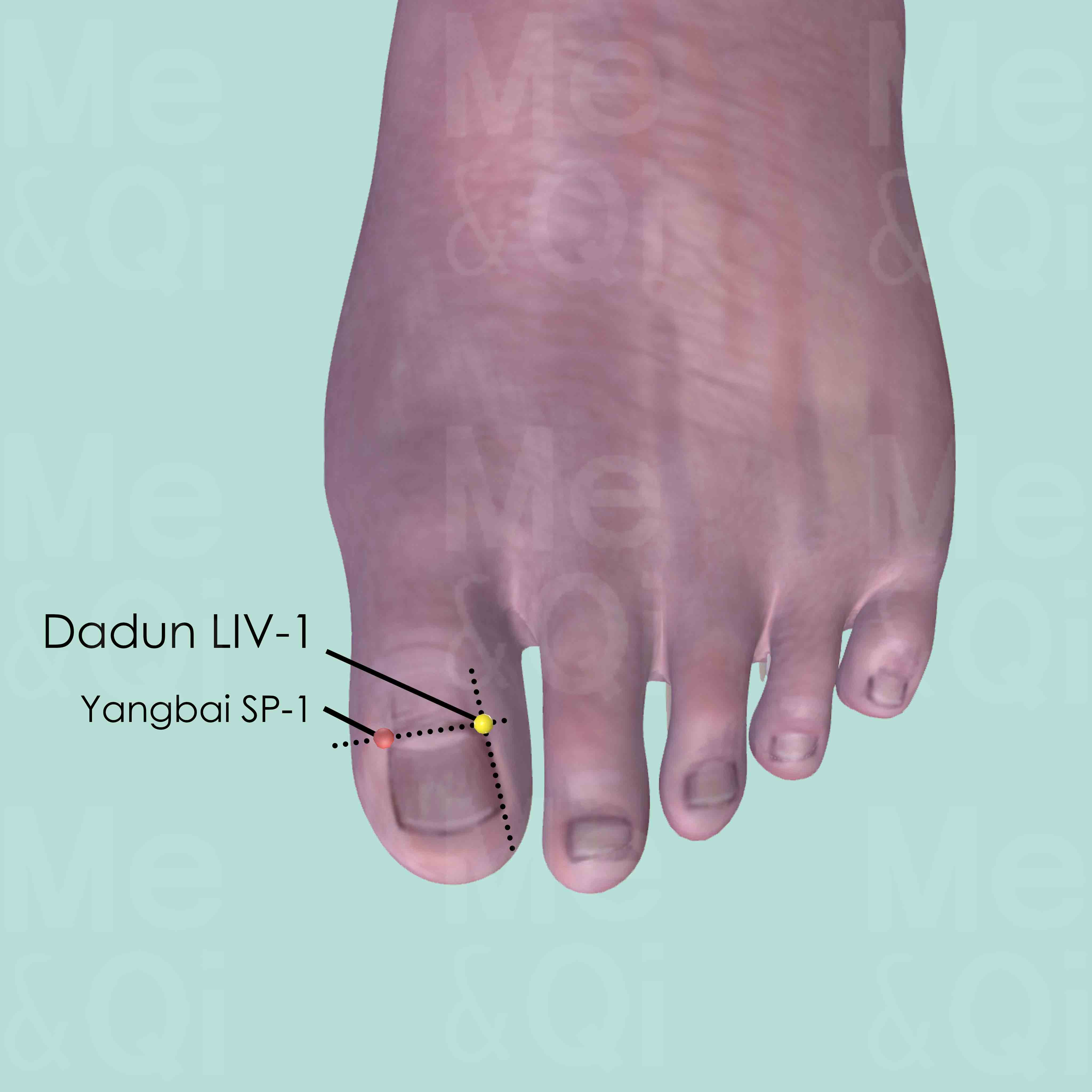
Dadun LIV-1
On the lateral side of the dorsum of the great toe terminal phalanx, between the lateral corner of the nail and interphalangeal joint.
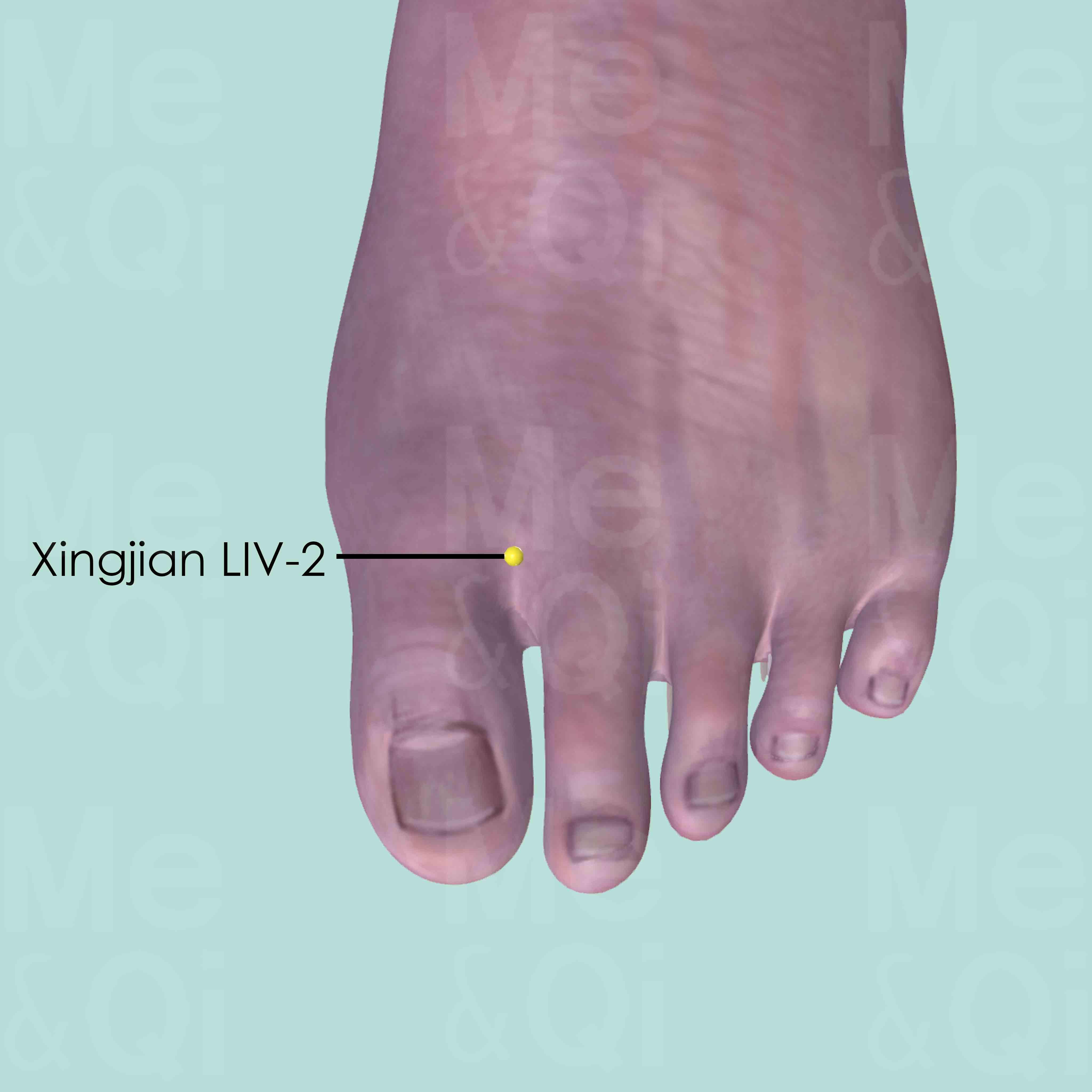
Xingjian LIV-2
Between the first and second toe, on the dorsum of the foot, 0.5 cun proximal to the interdigital fold.
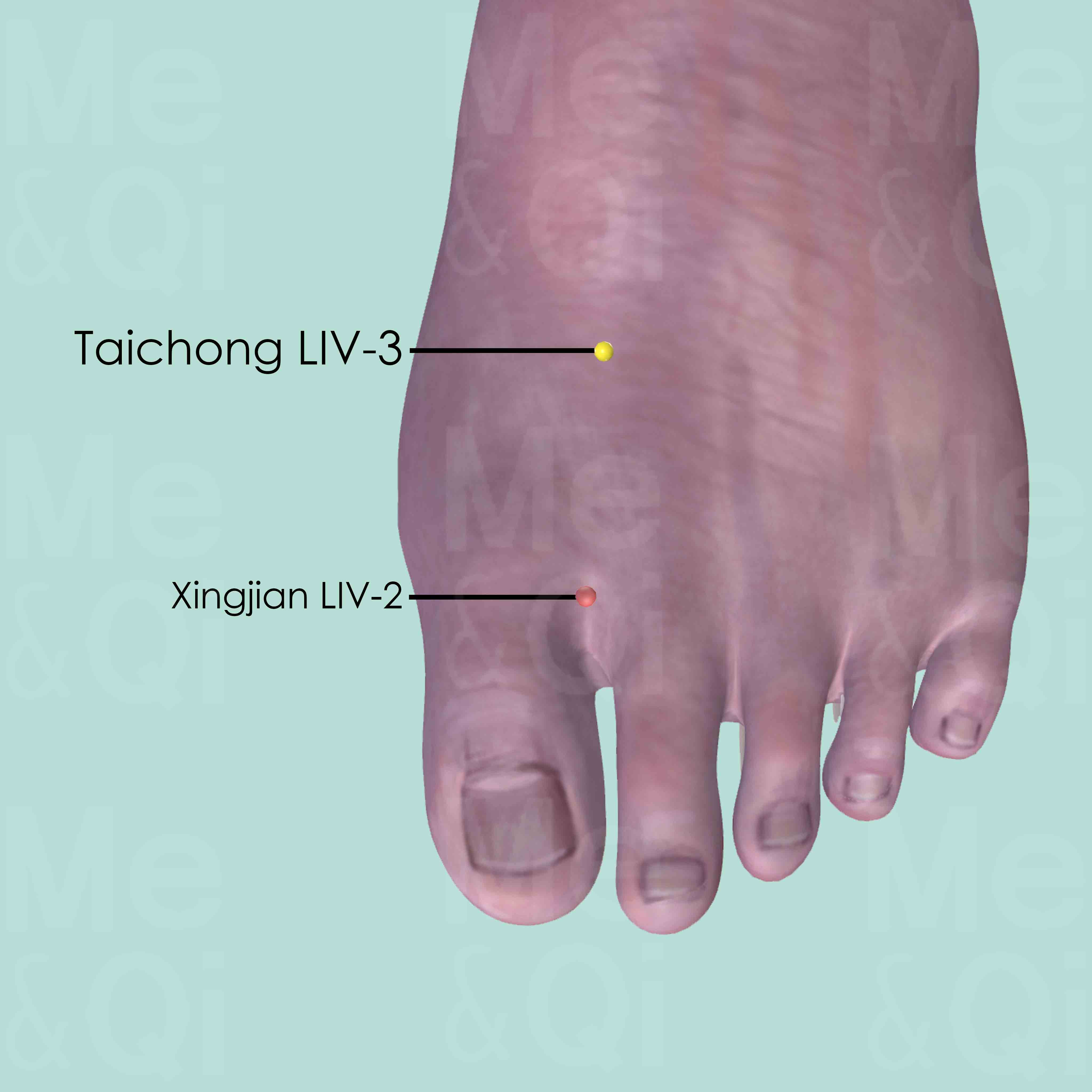
Taichong LIV-3
On the dorsum of the foot, between the 1st and 2nd metatarsal bones, in the depression proximal to the metatarsophalangeal joints and the proximal angle between the two bones.
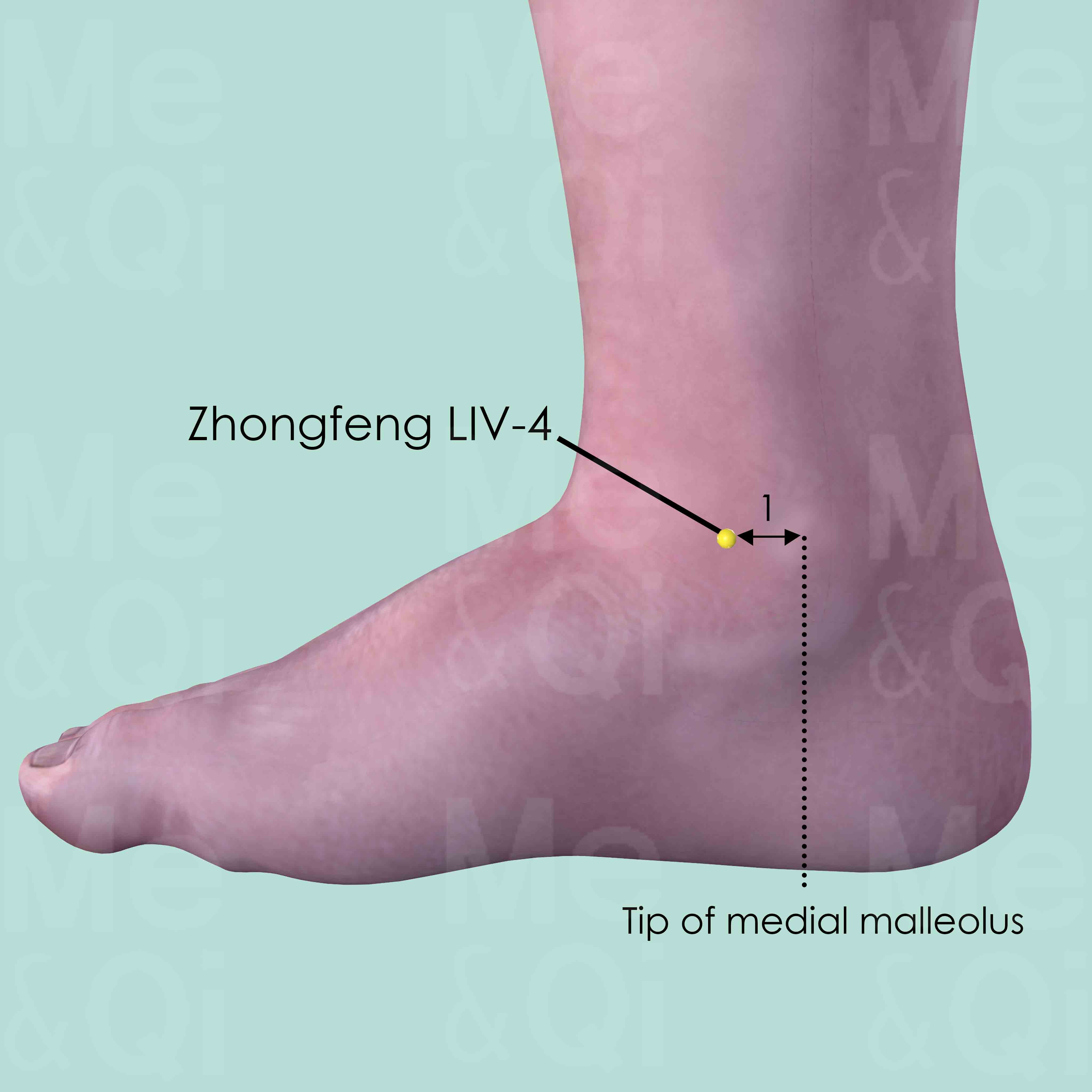
Zhongfeng LIV-4
1 cun anterior to the tip of medial malleolus, in the depression on the medial side of the tendon of the tibialis anterior.
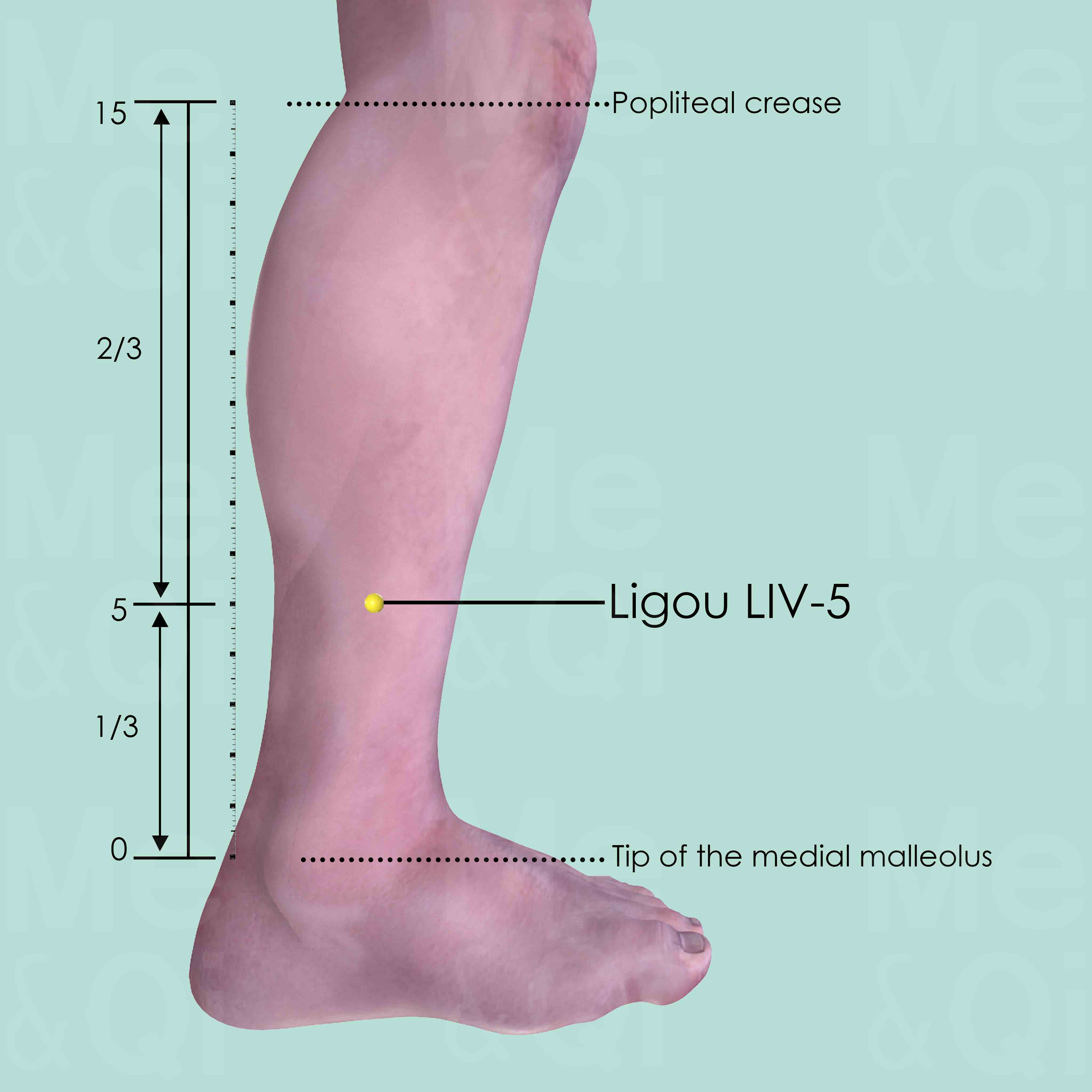
Ligou LIV-5
5 cun above the tip of the medial malleolus, on the medial aspect and posterior to the medial crest of the tibia.
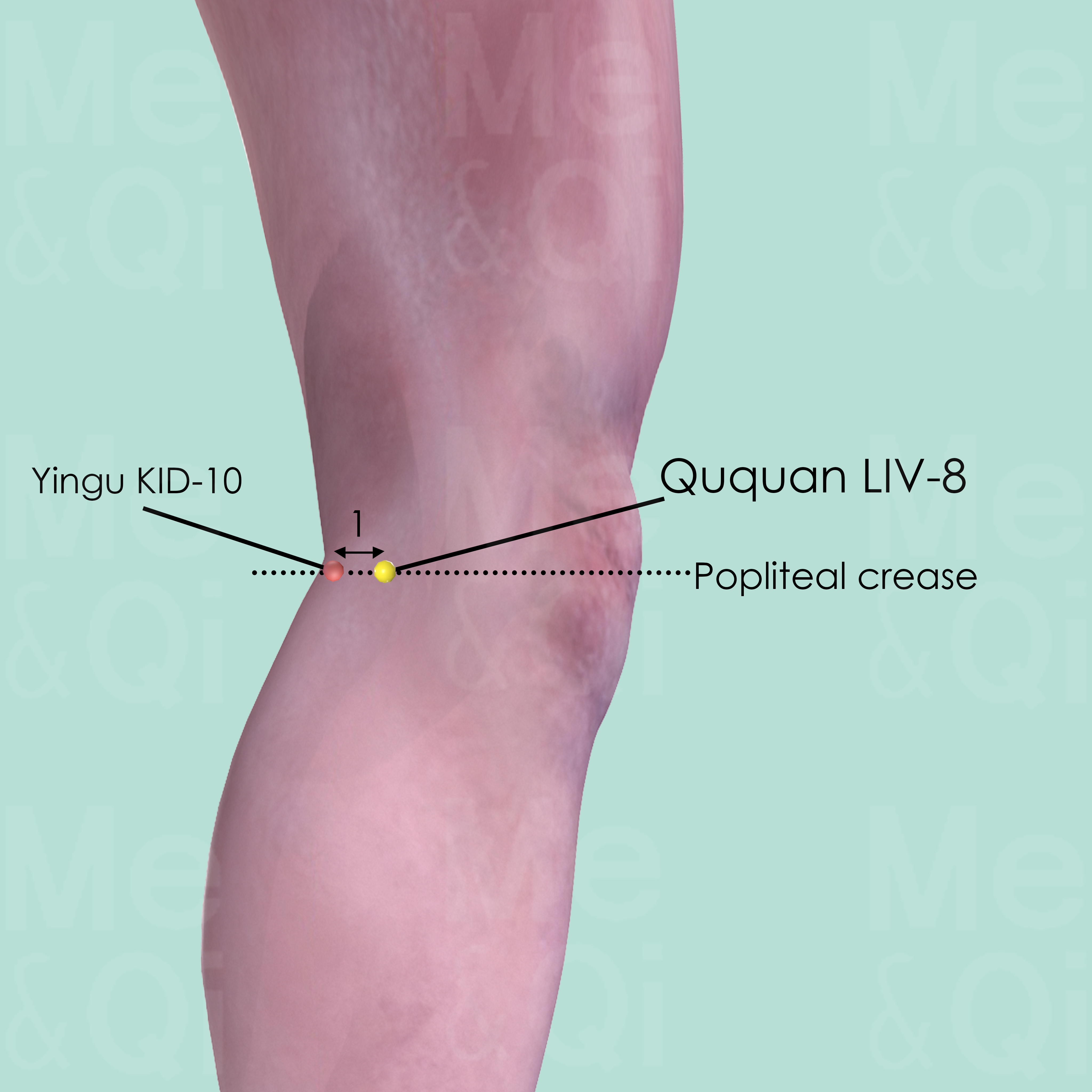
Ququan LIV-8
On the medial aspect of the knee join. Flex the knee and locate the point above the medial end of the popliteal crease, posterior to the medial condyle of the tibia, on the anterior border of the insertion of semimembranosus and semitendinosus muscle, about 1 cun anterior to Yingu KID-10.
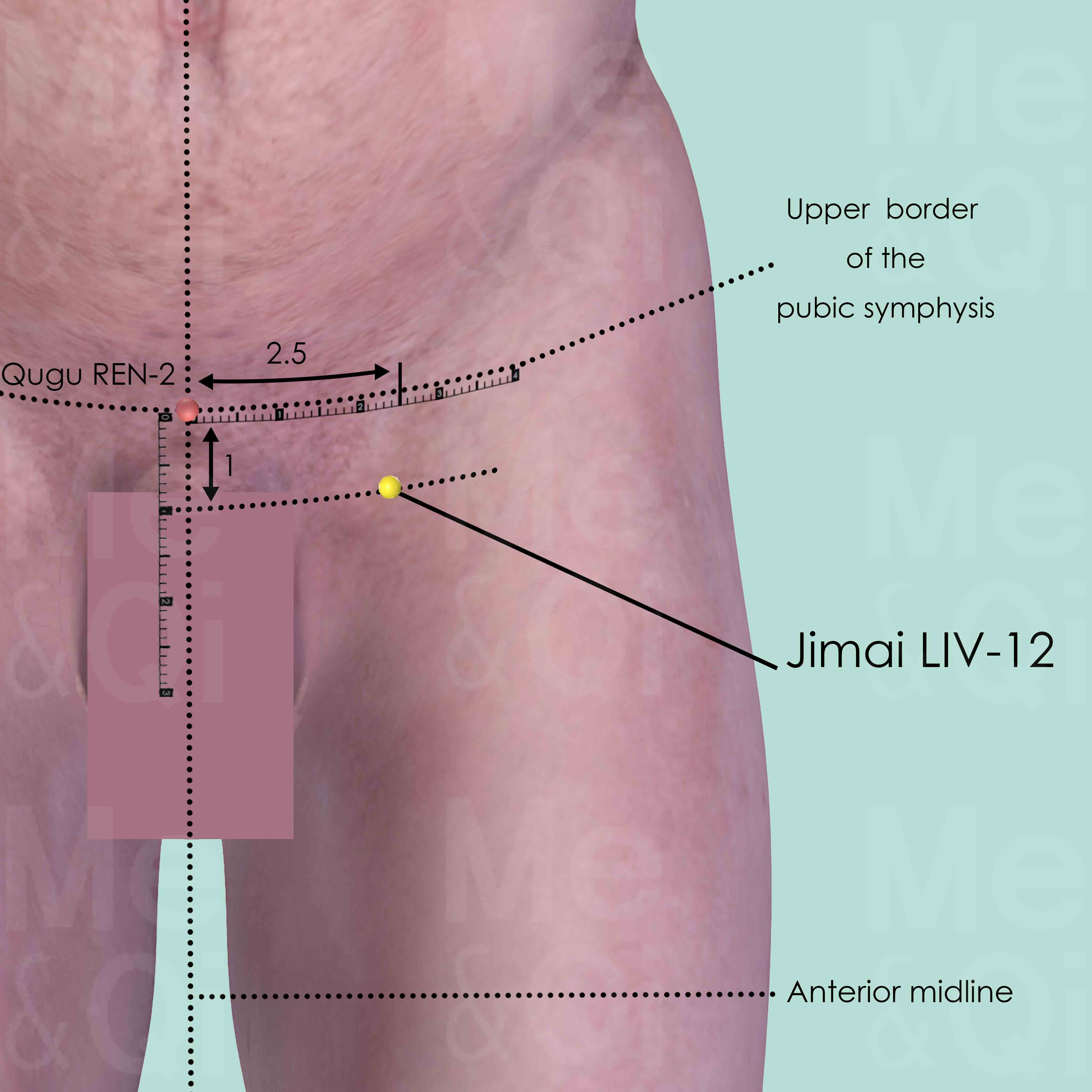
Jimai LIV-12
Interior and lateral to the pubic spine, 2.5 cun lateral to the Qugu REN-2 on the anterior midline and 1 cun inferior to the upper border of the symphysis.
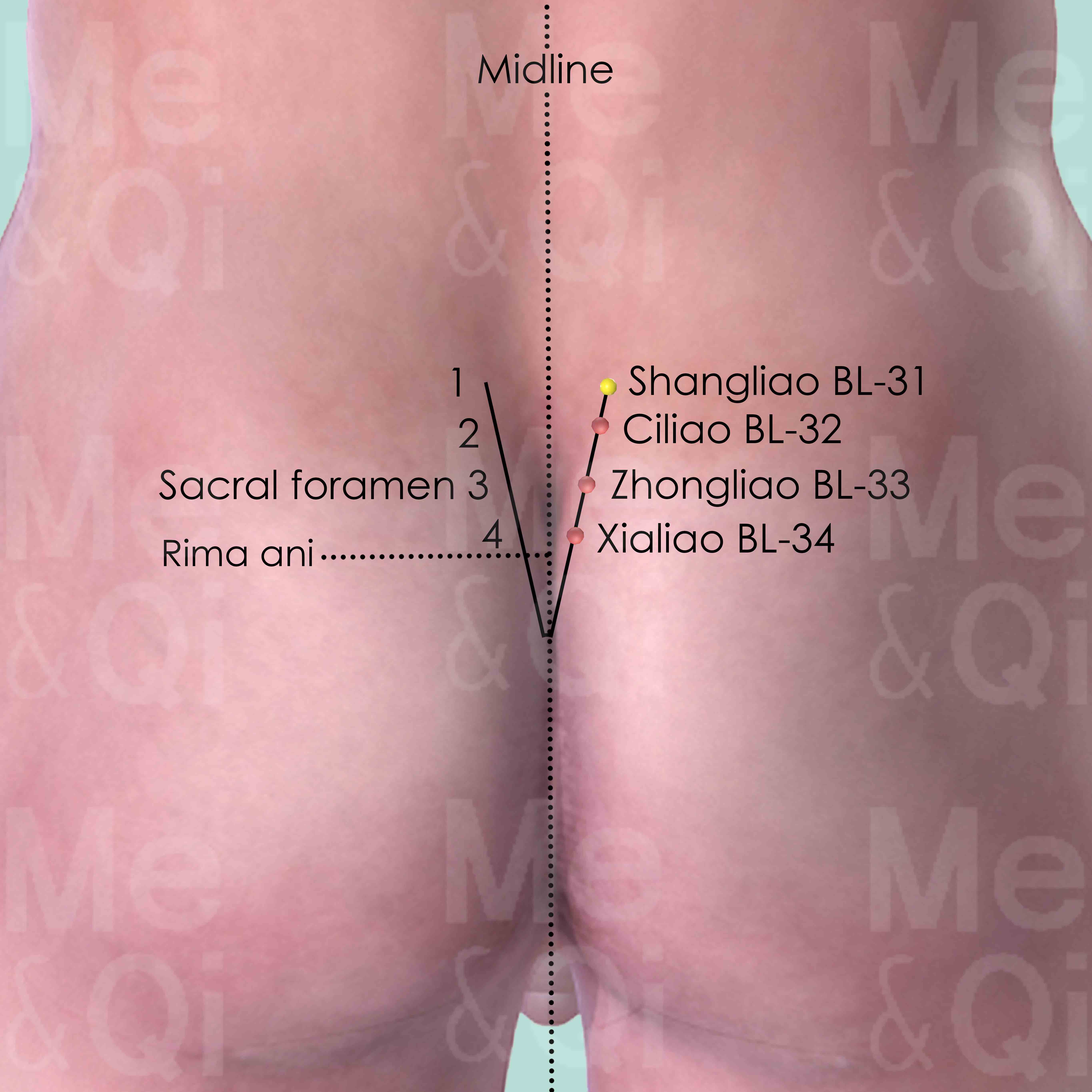
Shangliao BL-31
In the 1st posterior sacral foramen, about midway between the posterior superior iliac spine (PSIS) and the midline.
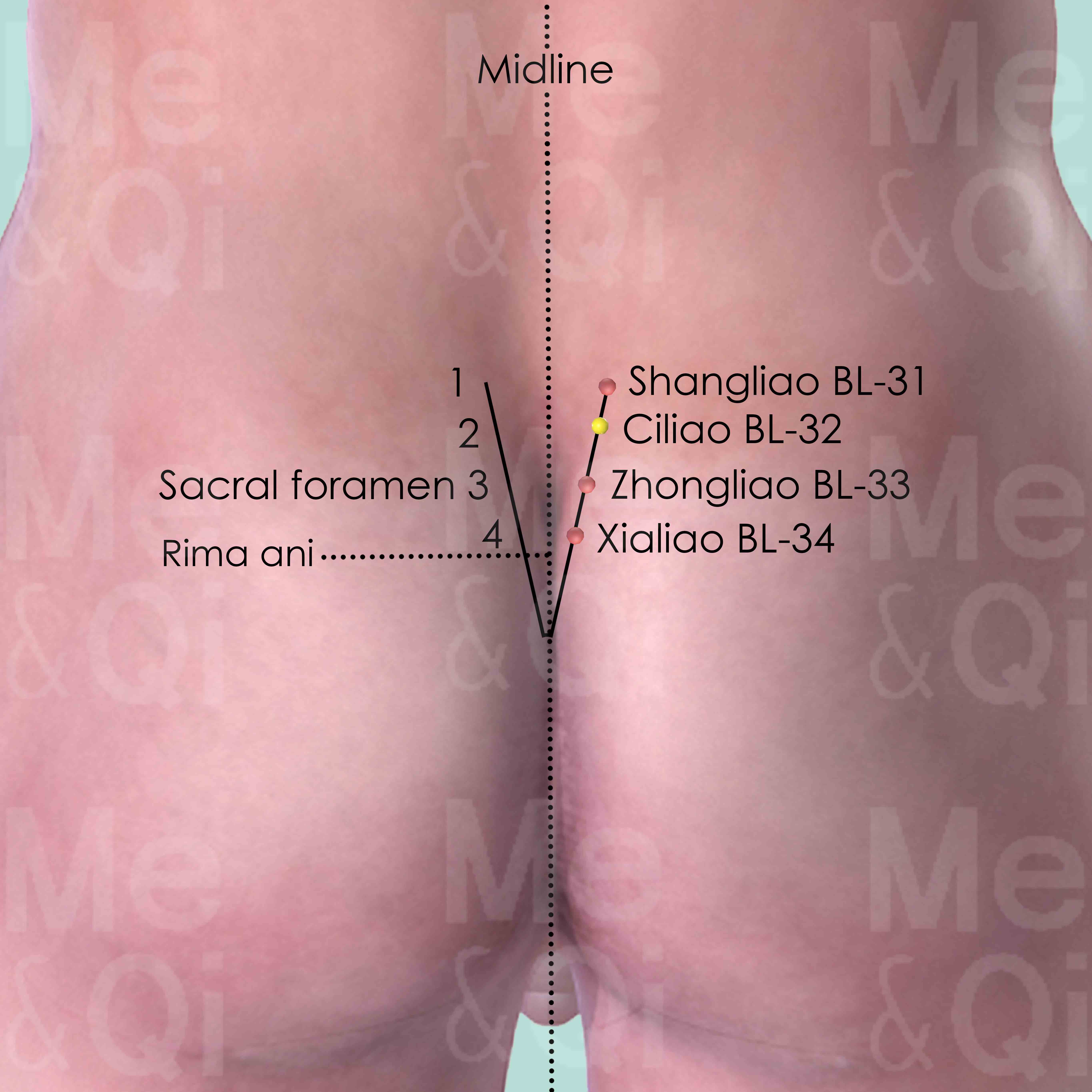
Ciliao BL-32
In the 2nd posterior sacral foramen, about midway between the posterior superior iliac spine (PSIS) and the midline.
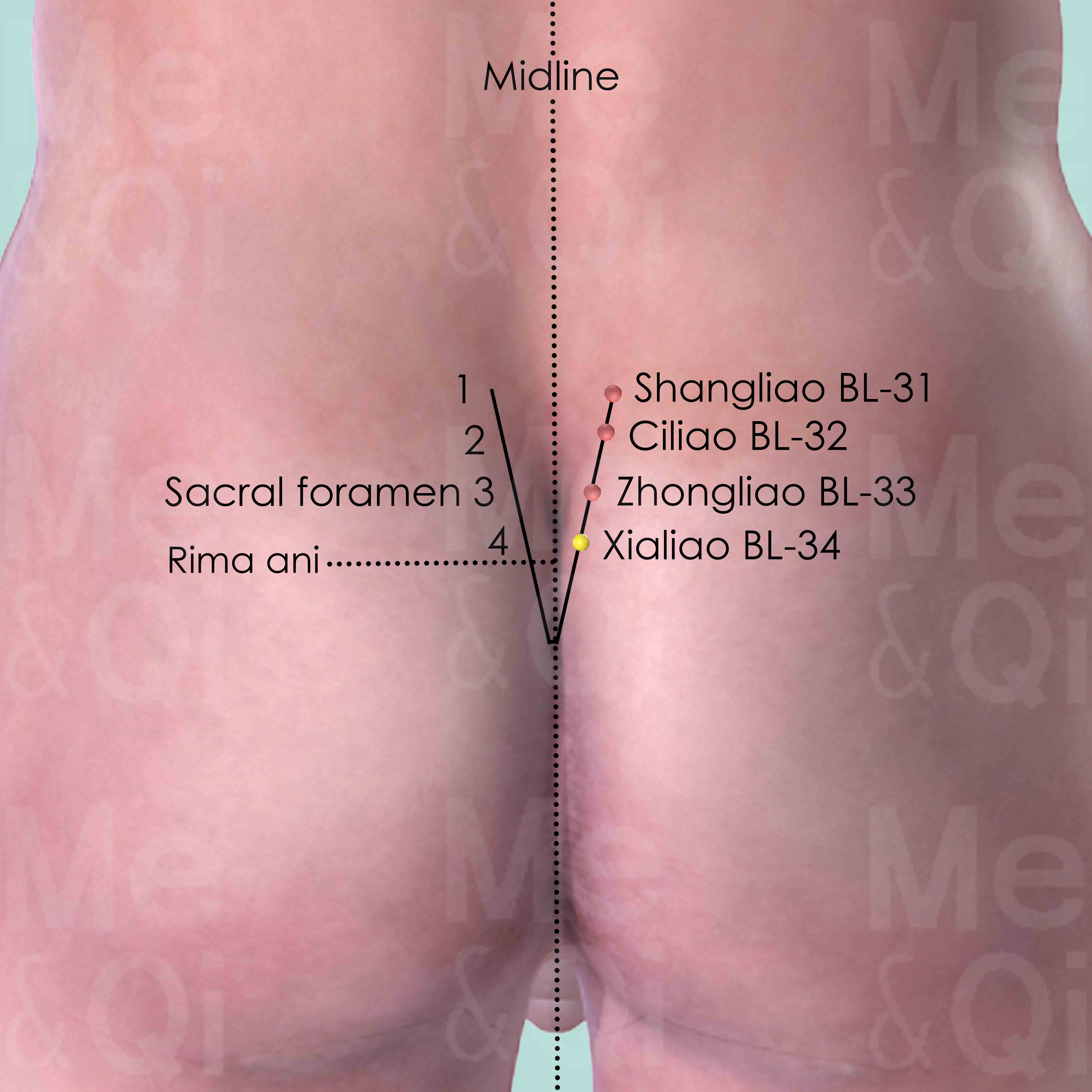
Xialiao BL-34
In the 4th posterior sacral foramen, between the posterior superior iliac spine and the midline.
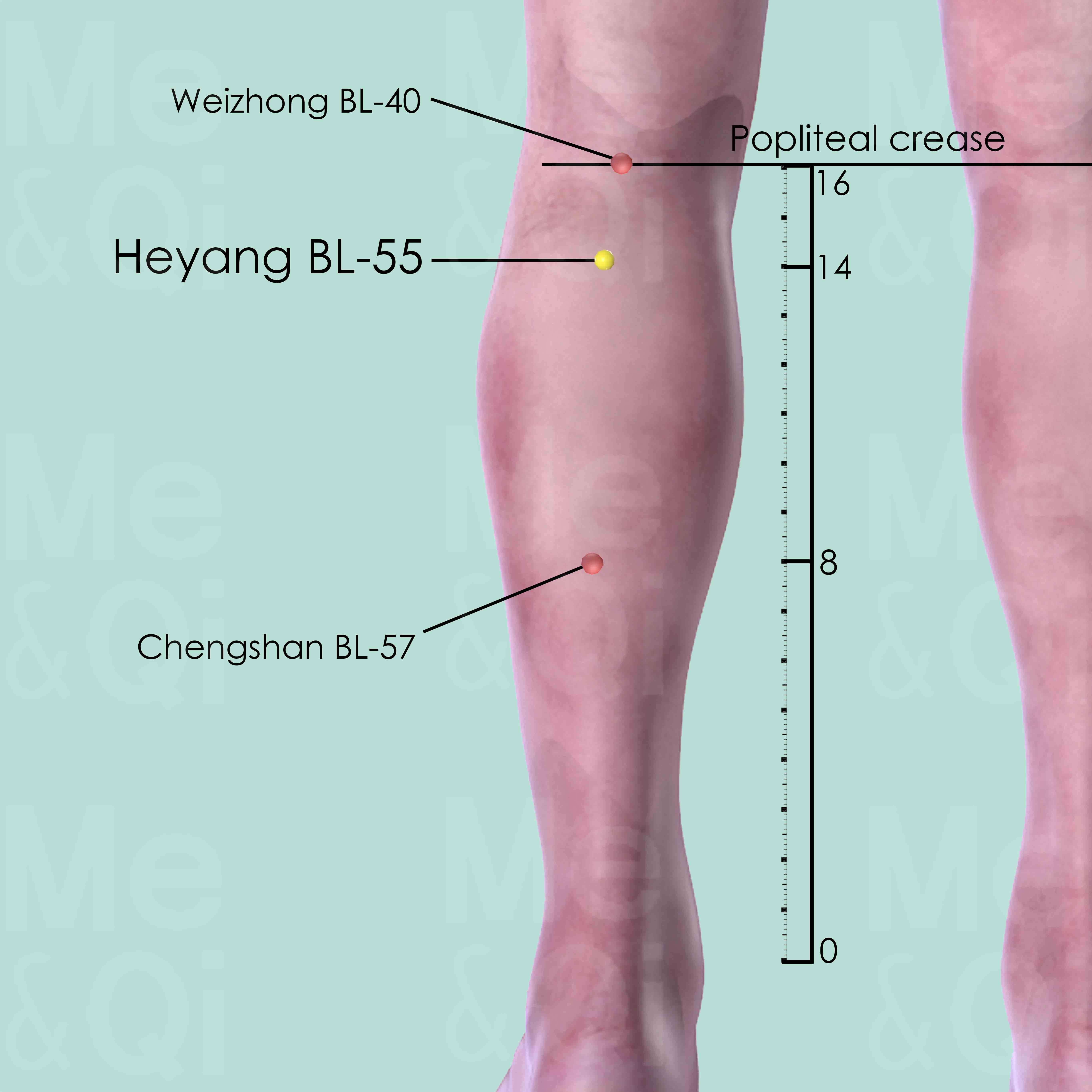
Heyang BL-55
2 cun directly below Weizhong BL-40, between the medial and lateral bellies of gastrocnemius muscle, on the line joining Weizhong BL-40 and Chengshan BL-57.
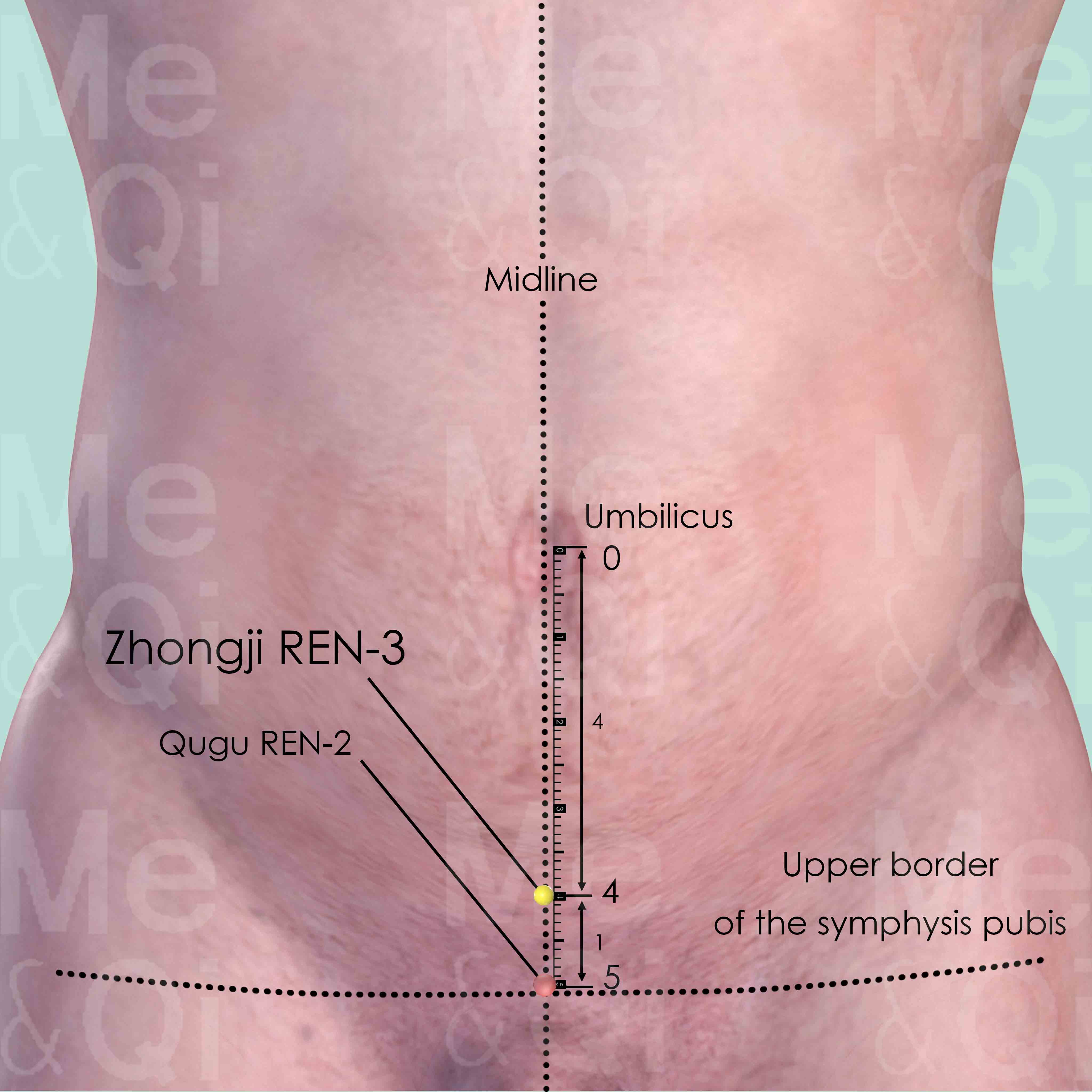
Zhongji REN-3
On the anterior midline, 4 cun below the umbilicus, 1 cun above Qugu REN-2, which is located at the upper border of the symphysis pubis.
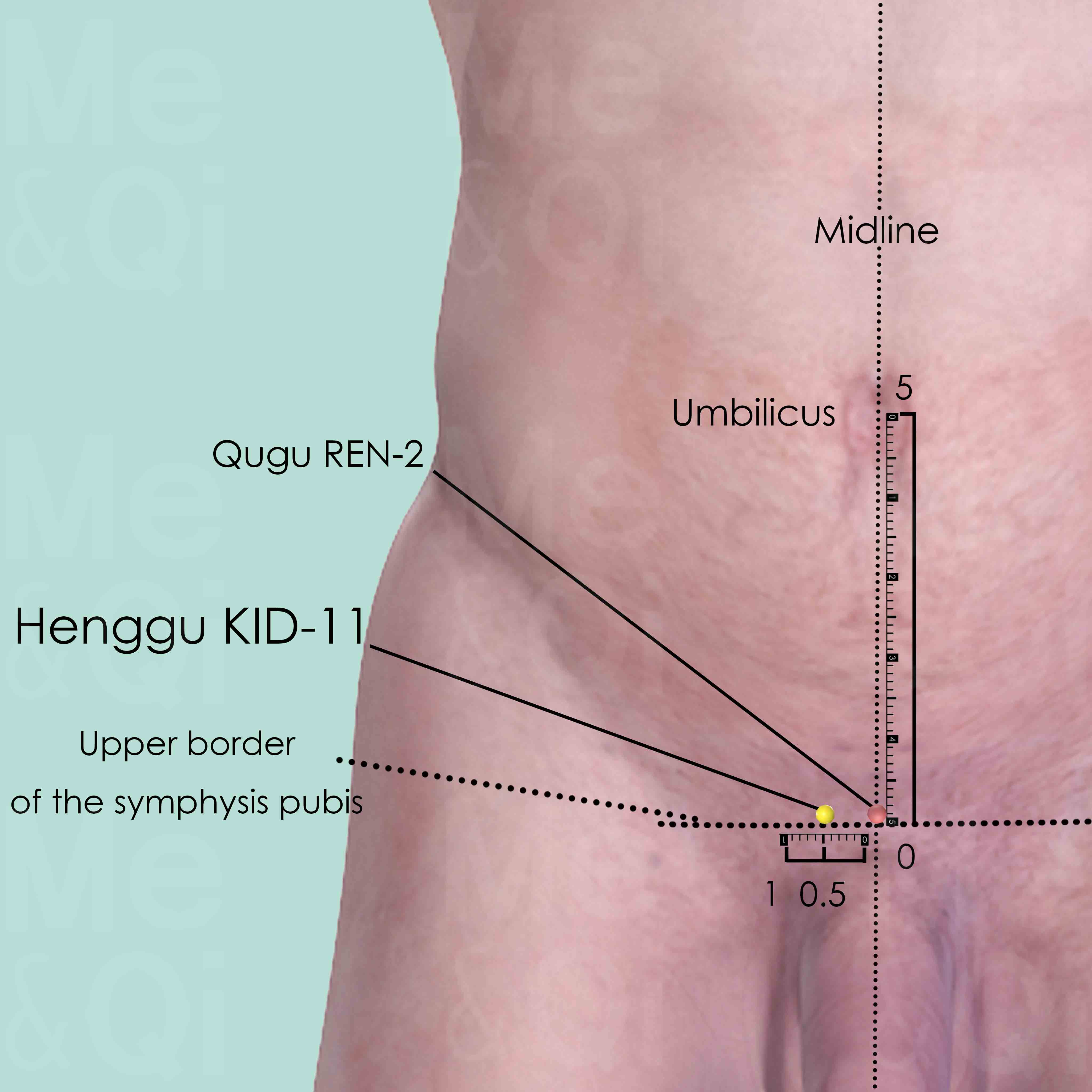
Henggu KID-11
5 cun below the umbilicus, on the upper border of symphysis pubis, 0.5 cun lateral to the anterior midline. It is at the same level as Qugu REN-2 which is at the anterior midline.
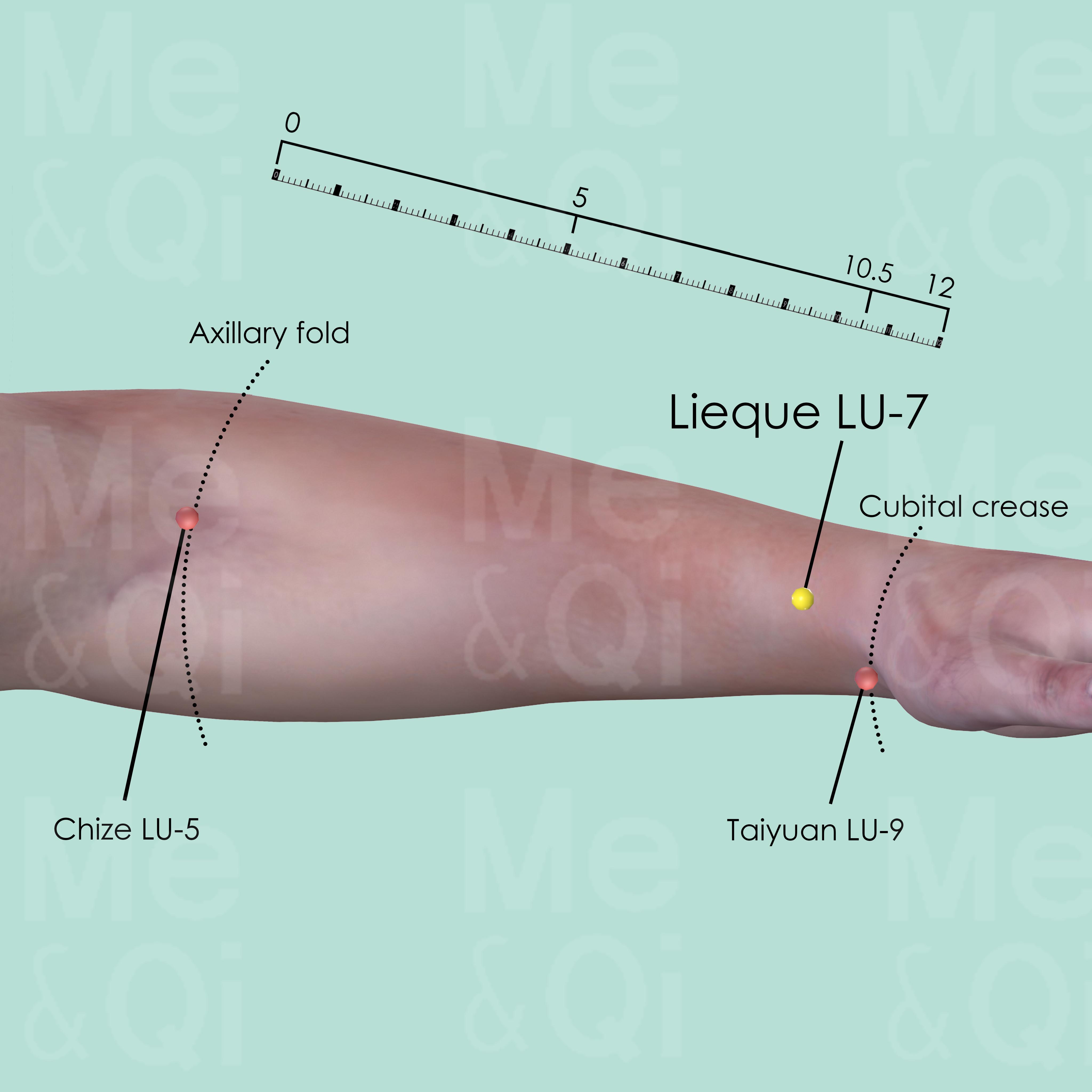
Lieque LU-7
Above the styloid process of the radius, about 1.5 cun proximal to the wrist crease (wrist joint space) in a V-shaped depression.
TCM Herbs for Genital Pain
TCM utilizes a variety of herbs to address genital pain. Herbs such as Amber (Hu Po), are often prescribed. Amber, a sweet and neutral herb, targets the Bladder, Heart, and Liver, and is used for conditions like Heart Blood Deficiency and Blood Stagnation. By addressing these underlying patterns, TCM aims to alleviate pain and restore balance in the body's energy systems.
- By Herb Category
- Herbs that anchor and calm the spirit
Herbs that anchor and calm the Spirit
Genital pain can be treated by these herbs if it stems from disturbances in the Shen (spirit), often due to instability in the heart and kidney energies.
One such herb is Amber (Hu Po), which is directly recommended for genital pain.

